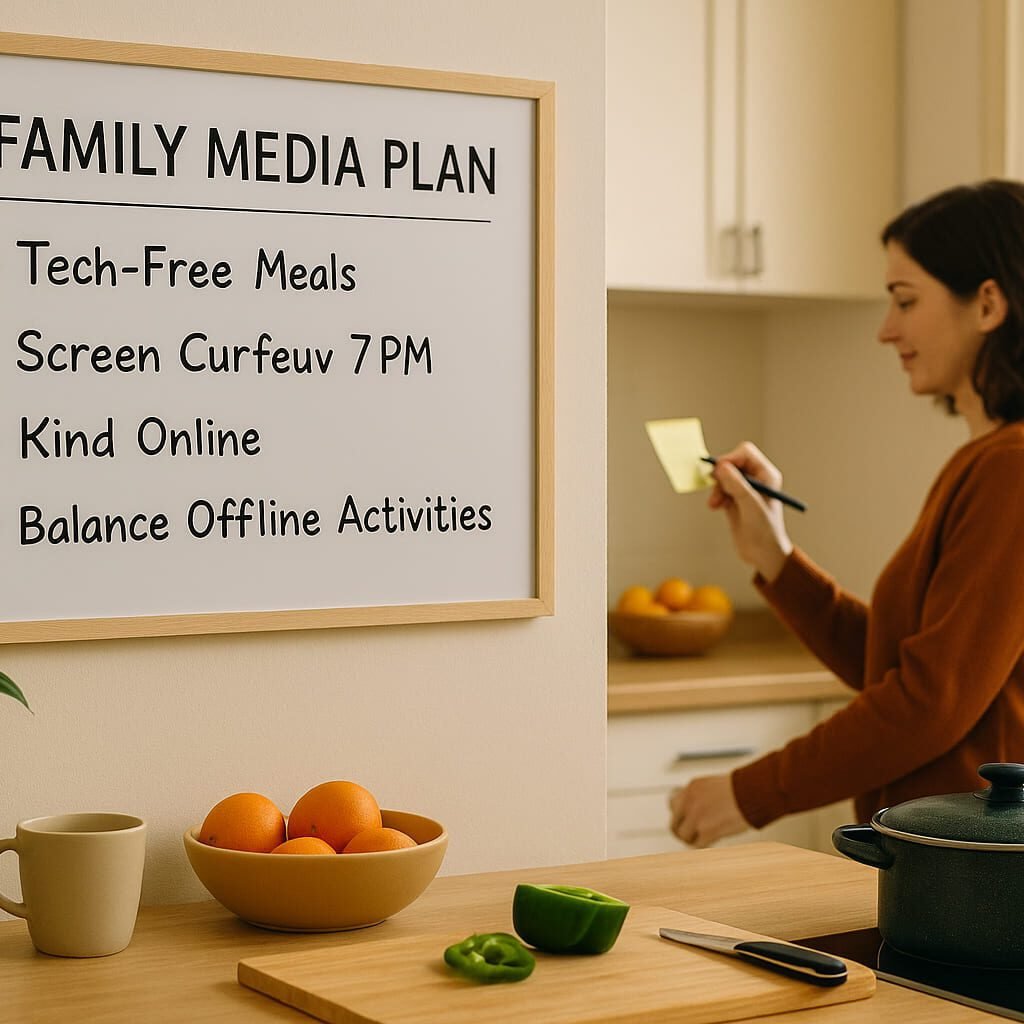Every parent today knows the quiet worry that comes with a glowing screen and therefore managing screen time is very important. Whether it is a toddler mesmerized by cartoons or a teenager deep in social media, screen time has become both a comfort and a concern in modern parenting.
Yet behind the numbers lies a deeper truth—this is not just about time. It is about connection, conversation, and how we guide children through a digital world that never turns off. This guide offers not only research-backed ways of managing screen time, but also practical ways to create emotionally attuned digital dialogues that nurture trust and responsibility.
Why Screen Time Needs More Than Limits
Parents are often told to “limit screen time,” but modern research suggests that focusing solely on the number of hours misses the mark. The American Psychological Association advises shifting the conversation toward the quality, context, and purpose of media use, rather than just duration. In fact, age-appropriate content, parent co-viewing, and consistent rules tend to matter more than arbitrary time limits.
Similarly, the American Academy of Pediatrics highlights that collaborative family media plans and regular conversations about digital habits are more effective than blanket restrictions. This shift encourages parents to take an active role in shaping their child’s media experience—by talking, modeling, and engaging, not just monitoring.
The Psychological Impact of Excessive Screen Time
Excessive screen use, especially when it displaces sleep, physical activity, or face-to-face interaction, has been linked to increased anxiety, disrupted sleep patterns, and behavioral challenges. The National Institutes of Health outlines seven key risks, including social withdrawal, attention difficulties, and overexposure to violent or unrealistic content.
For young children, the World Health Organization advises that children under age 5 should have no more than one hour of sedentary screen time per day, and that younger toddlers (under 2) should avoid screens altogether outside of video chatting. These early years are critical for developing sensory, motor, and social-emotional skills that screens cannot replicate.
Turning Screen Time into Connection Time
The real opportunity lies not in eliminating screens but in using them to build stronger relationships. Here are five emotionally intelligent strategies to shift from screen limits to screen leadership:
1. Start With Curiosity, Not Control
Begin conversations with genuine questions:
- “What do you like about that game?”
- “How did that video make you feel?”
This shows that you respect your child’s interests, which builds openness and reduces the likelihood of sneaky behavior.
2. Create a Shared Media Agreement
Rather than imposing rules, co-create a family media plan. The AAP’s Family Media Plan tool encourages families to align on shared values, such as tech-free meals, screen curfews, and respectful online behavior.
3. Model the Digital Habits You Want to See
Children notice when parents scroll through phones at dinner or respond to work emails during storytime. Be transparent about your own screen use and narrate your decisions:
- “I am putting my phone down so I can really listen to you.”
4. Use Screen Time as an Emotional Check-In
If your child has been online for a while, gently ask:
- “How are you feeling after being on your phone?”
This helps build emotional literacy and fosters self-awareness about how media impacts their mood.
5. Name the Purpose, Not Just the Rule
Instead of saying “Turn that off,” try “Let’s take a break so we can move our bodies and reset.” This centers the goal (wellbeing, connection, or rest) instead of focusing only on the screen.

Talking to Teens About Screen Time
Teenagers require a different approach. Their screens are not just for entertainment—they are lifelines to friends, identity, and self-expression. According to the APA’s Healthy Teen Video Viewing Guide, the most effective strategy is dialogue over discipline.
Try these emotionally intelligent prompts:
- “What do you wish adults understood about your time online?”
- “How do you decide what to post or share?”
Managing Screen Time for Younger Children
With young children, boundaries should be clear and predictable—but also playful and interactive. For example:
- Watch short videos together and talk about the story afterward.
- Use screens as launchpads for offline play (e.g., act out scenes or draw characters).
Replacing Screens with Purposeful Alternatives
Sometimes, the best screen management happens by accident—when children are so engaged in real-life experiences that they forget about screens entirely. Offer inviting alternatives like:
- Creative outlets (drawing, music, or cooking)
- Outdoor play and physical movement
- Quiet time for reading or storytelling
See the article “Creating Safe and Stimulating Play Spaces at Home” on PsycheShare.com for ideas on curating screen-free environments that support emotional regulation and independent play.

A Final Word to Parents: This Is About Connection, Not Perfection
Every family’s digital journey is different. There will be days when screens are a survival tool and others when they become a source of joy or stress. What matters most is that children feel seen, heard, and guided—not shamed or policed.
Managing screen time effectively means anchoring your family in shared values, keeping the conversation open, and using technology to strengthen—not strain—your connection.
As the research from NIH, APA, and WHO shows, screen time management is not about fear or control. It is about compassion, modeling, and mindful leadership in the digital age.



Add a Comment